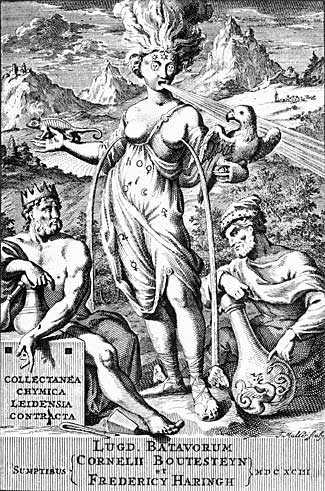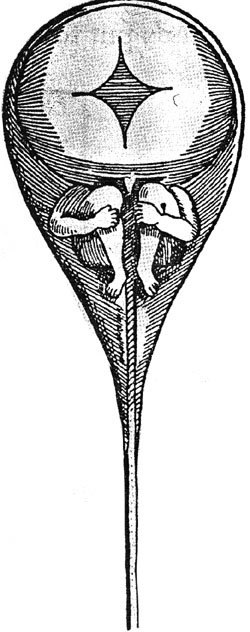Sexual Alchemy
Renaissance alchemists experimented with semen and menstrual blood in the hopes of producing the Philosopher's Stone. Three of the most famous certainly did: Nicholas Flamel (1330-1418) in France and John Dee (1527-1608) and Edward Kelley (1555-1597) in England relied on their wives for the raw materials.


It had to remain a secret though for masturbation and coitus interruptus were banned by the Church because they wasted semen. Sex was for procreation the normal way, not via alchemy. Others, like Paracelsus in Switzerland, Michael Maier in Germany and Robert Fludd and Sir Isaac Newton in England, never married. Many alchemists were devoutly religious and saw no contradiction with Christianity, even if others did.
Below: the frontispiece to an alchemy book published in Leiden in 1693. Again the fascination with fountains of breast milk and magical women.

Alchemists were the great eccentrics of their times, fascinated with angels, dreams and divine light. Flamel and his wife were said to have made the Philosopher's Stone and achieved immortality. No surprise then to find him popping up in J.K. Rowling, Umberto Eco and Dan Brown.
They had plenty of critics, from Petrarch and Chaucer to Sebastian Brant and Erasmus. Georg Faust popped in Goethe and John Dee seems to have inspired Ben Jonson's satire The Alchemist (1610). Some went on trial and were executed as betrüger (charlatans). Dutch and Flemish painters in the 16th and 17th centuries covered the subject, notably Pieter Bruegel the Elder and David Teniers the Younger.
Another figure of interest is Nicolaas Hartsoeker who in 1694 invented an early microscope and had the temerity to look at sperm. He wasn't the first to do this, but he speculated that perhaps a tiny man (a homunculus) could be inside each sperm, which would grow to full size. The idea was popular. His drawing is below.

